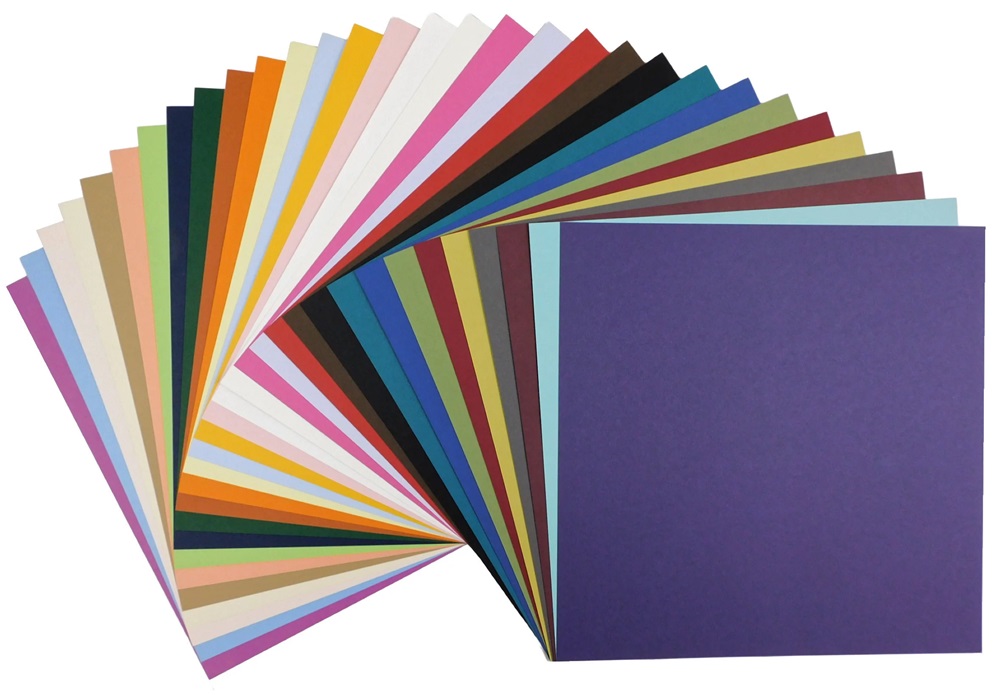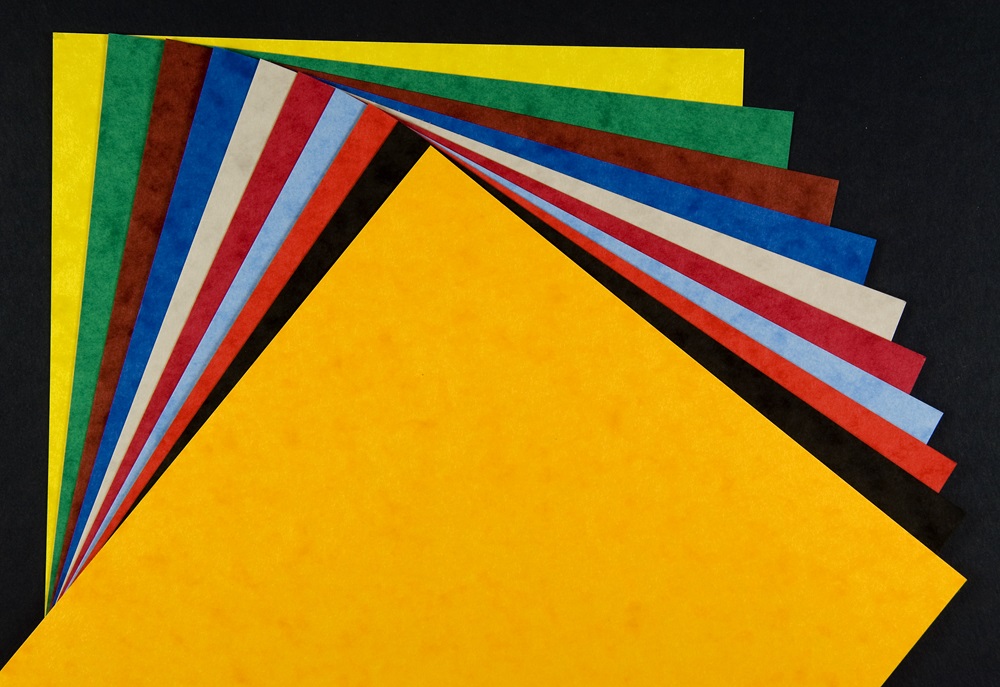Paper materials have an extraordinary power because of their tangible existence in a world where digital communication is becoming increasingly prevalent. Card stock is a beneficial and adaptable material that may be used for various discreet applications in personal and professional contexts. Card stock offers durability, versatility, and a tactile touch that digital alternatives can’t equal. It is ideal for everything from business cards that make a lasting first impression to event invites that set the tone for special occasions.
Card stock is heavier, thicker, and more resilient than regular writing or printing paper. It is frequently utilised for many applications that call for more robust materials, including business cards, postcards, invitations, greeting cards, and more. Card stock is available in various weights and qualities, offering designers and users flexibility in layout and use. While matte, glossy, or textured surfaces give various tactile and visual impacts, heavier weights provide more stiffness and longevity.
Category in Card Stock
Card stock is generally classified according to its intended function, weight, and finish. Card stock is typically categorised as Lightweight, Mediumweight, or Heavyweight based on weight, expressed in pounds (lb) or grams per square metre (gsm). Card stock can have a variety of finishes, such as matte, glossy, satin, and texture, which alter its appearance and texture. Card stock is available in white, ivory, pastels, and vibrant colours, among other colours. Particular kinds of card material are intended for specific applications.
Card Stock Paper
Card stock paper is a thick, robust paper frequently used for printing and handicraft tasks. It is also referred to as card stock or card paper. Because it is denser and more resilient than regular printing paper, it can be used in various situations requiring a more robust material and a higher weight.
Because card stock is thicker than ordinary paper, it feels more solid and has exceptional durability. It usually weighs sixty pounds (90 grammes) and more than one hundred pounds (270 grammes). Card stock can withstand handling and use in various applications because of its thickness, which makes it rigid and resistant to bending or ripping. Card stock can be used for multiple crafts because it comes in various colours, textures, and finishes. Printing documents, making cards for friends and family, crafting, making business cards, scrapbooking, and more can all be done with it.
 Various card materials are made to work with laser and inkjet printers, enabling the printing of excellent text, graphics, and photographs. Depending on the use, card stock paper can have a matte, glossy, satin, or textured feel, providing a variety of aesthetic alternatives. Specific card stock sheets, such as metallic card stock to give an air of luxury to invitations and cards or archival-quality card stock for long-term document preservation, are made especially for specific uses.
Various card materials are made to work with laser and inkjet printers, enabling the printing of excellent text, graphics, and photographs. Depending on the use, card stock paper can have a matte, glossy, satin, or textured feel, providing a variety of aesthetic alternatives. Specific card stock sheets, such as metallic card stock to give an air of luxury to invitations and cards or archival-quality card stock for long-term document preservation, are made especially for specific uses.
White Stock Cards
Blank cards manufactured from white card stock paper are sometimes called “white stock cards”. A blank white stock card is a common starting point for making customised greeting cards for important events like birthdays, holidays, weddings, or thank-you messages. They can be customised with different patterns and words, imprinted, or painted. White stock cards are a common choice when making DIY invites for weddings, parties, graduations, and other celebrations. They offer a tidy, traditional background on which to print or handwrite event information.
White stock cards are often used as place cards to designate guest seating at occasions like weddings, banquets, and conferences. You can personalise them by adding table numbers or guest names. Some people and companies use white stock cards to produce distinctive, personalised business cards, even though typical business cards frequently come in standard sizes and finishes. Contact details, company logos, and other branding components can be added.
Artists and crafters frequently use white stock cards to create collages, mixed-media pieces, and other handcrafted artwork. They offer a stable surface for a range of artistic media and methods. White stock cards are familiar material educators and students use to make flashcards for learning equations, vocabulary, historical information, and other subjects.
Staples Card Stock
“Staples Card Stock” describes paper sold as card stock by the well-known office supply retail chain Staples. A range of card stock alternatives ideal for printing, crafts, and other uses are available at Staples. There are several weights of staple card stock, ranging from lightweight to heavyweight. Customers can use this to select the thickness that works best for them, whether they are using it for crafts, ordinary printing, or speciality projects.
Standard letter size (8.5 x 11 inches) and bigger sizes ideal for posters, signage, and other projects are among the several sizes of Staples Card Stock. Although Staples typically sells card material in white, they occasionally carry additional colours to accommodate various project needs and personal tastes. Staples Card Stock is available in multiple finishes, including matte, glossy, and textured, giving consumers more choices for crafting and other printing projects.
Generally, staple card stock is made to work with both laser and inkjet printers, enabling the printing of text, graphics, and images with excellent quality. Typically, staples card stock is offered in packs of several sheets, which makes it convenient for clients who require more significant amounts for their projects.
Black Card Stock
Paper with a continuous black tone, or black card stock, provides a striking background for various crafts. Black card stock comes in weights, from lightweight to heavyweight, much like other card stock varieties. The card stock’s thickness dictates how sturdy and adaptable it is to various uses.
Black card material is adaptable and suitable for a range of tasks. Black card stock can create eye-catching signs, posters, and displays for events, promotions, or decorations. It can also be used as a base for scrapbooking, paper crafting, card making, and other artistic endeavours. Black card stock can also add elegance and sophistication to wedding invitations, party invitations, and other unique occasion cards. To create a striking impression, some companies utilise black card stock for their presentation covers, business cards, brochures, and other marketing materials.
 Although black card stock is commonly utilised as a backdrop for printing text and illustrations with lighter colours, it can also be printed directly with specific methods like foil stamping or white ink printing. It’s essential to check printer specifications and test printing techniques beforehand, as not all printers can print directly onto black card stock. Diverse treatments, such as matte, glossy, satin, or textured, are available for black card stock, providing distinct tactile and visual effects for diverse applications.
Although black card stock is commonly utilised as a backdrop for printing text and illustrations with lighter colours, it can also be printed directly with specific methods like foil stamping or white ink printing. It’s essential to check printer specifications and test printing techniques beforehand, as not all printers can print directly onto black card stock. Diverse treatments, such as matte, glossy, satin, or textured, are available for black card stock, providing distinct tactile and visual effects for diverse applications.
Coloured card stock
Card stock paper in colours other than white or natural tones is called coloured card stock. It provides a plethora of choices for imaginative and valuable undertakings. Almost any colour, including pastels, vivid hues, earth tones, and metallic shades, is available in coloured card material. There are countless creative project possibilities with this broad colour pallet.
Like other card stock varieties, coloured card stock is available in a range of weights, from thin to thick, giving it adaptability for various uses. The card stock’s sturdiness and suitability for a specific project are determined by its thickness. Crafting is frequently used for do-it-yourself projects, including paper flowers, scrapbooking, greeting cards, and invitations. Instructors often make flashcards, posters, visual aids, and classroom decorations out of coloured card stock. Some companies make eye-catching brochures, flyers, presentation covers, and promotional items out of coloured card stock.
The majority of coloured card stock can be printed with inkjet and laser printers to produce text, graphics, and images of excellent quality. However, some hues need extra printing to maintain visibility and contrast, notably darker tones. Depending on the project, coloured card stock can have varying textures, matte, glossy, satin, or other finishes that provide varied tactile and visual effects. Specific coloured card stock sheets, such as shiny coloured card stock to elevate invitations and cards or acid-free coloured card stock for archival-quality artwork, are made for specialised uses.
Card stock is a beneficial and adaptable material for printing, crafts, and other uses. Card stock offers many creative and functional options due to its robust construction, an extensive selection of colours, textures, and finishes, and compatibility with other printing techniques. Card stock consistently shows its worth, whether used to make elaborate scrapbook layouts, personalised greeting cards for loved ones, eye-catching commercial materials, or classroom resource organisation.





